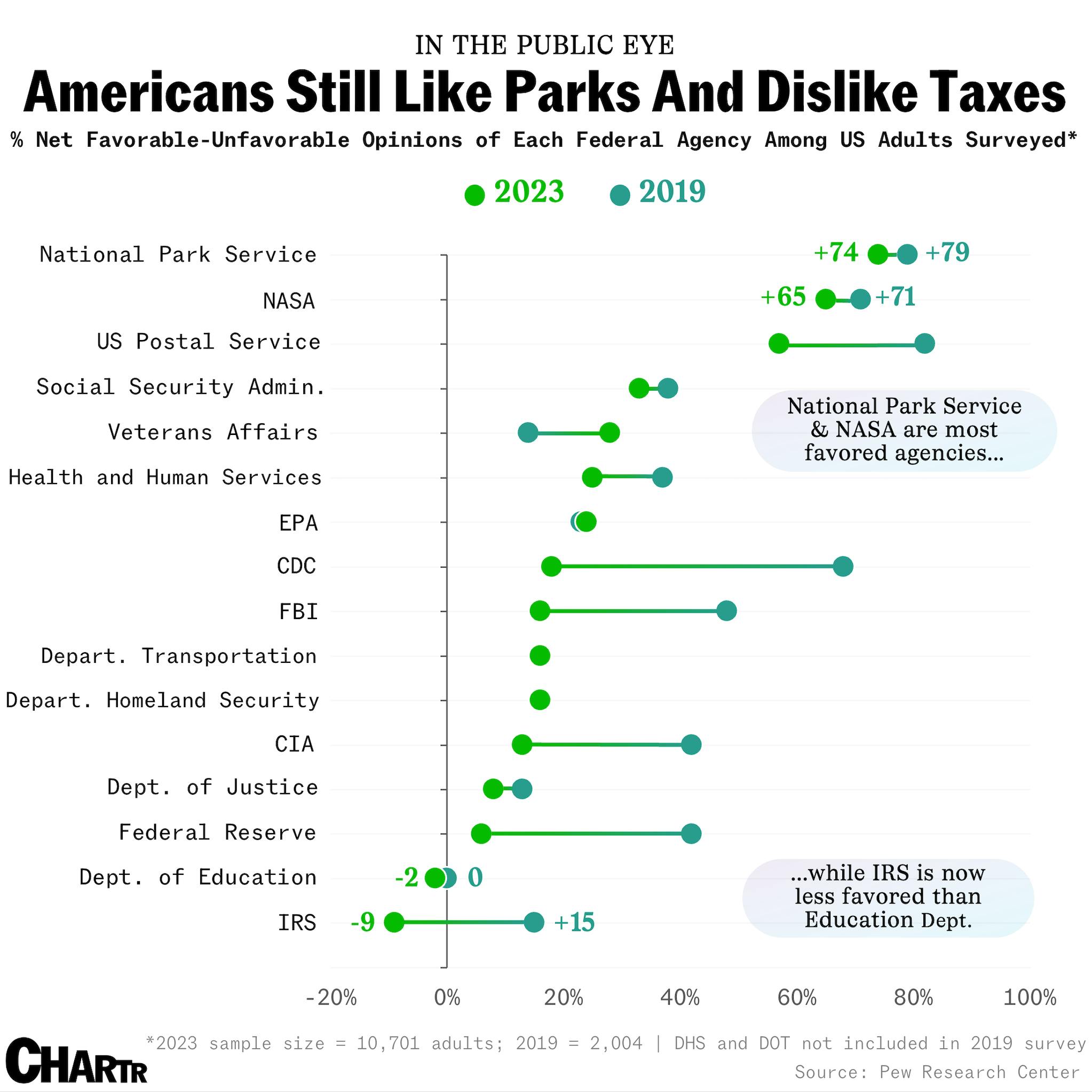America’s favorite (and least favorite) federal agencies
While the next government hangs in the balance, certain branches are simply more popular than others
Though we’re still months out from November, the presidential election race is getting more heated by what feels like the second, as an exceptionally eventful July obfuscated and even annulled some predictions of what the next US government might look like.
However, with the future heads of public bodies undecided (but hotly contested), politically weary Americans now have a less favorable view of nearly all federal agencies that comprise the US administration, according to recent surveys from Pew Research Center.
Out of the Depts
Indeed, Veterans Affairs was the only service that became more favorable in the public eye over that period. Knocking the Postal Service off of its (somewhat inexplicable) top spot, the National Park Service, with all its associated canyons and critters, was America’s favorite federal agency in 2023 — 81% of respondents had a favorable view and just 7% had an unfavorable view of the agency.
NASA — no stranger to both good and bad press in recent times — saw a slight decline in overall positive attitudes over the same timeframe. Net negative views of both the Department of Education and the IRS were recorded for the first time in last year’s survey, and although the tax-collecting IRS was, unsurprisingly, the least popular agency in 2023, what is perhaps surprising is that it was once much more popular: in 2019, respondents had a net favorable view of the agency by +15 percentage points.
